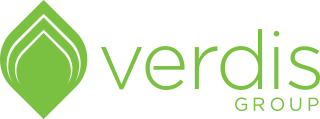Leading Through Disruption: Lessons from Living Systems

Sustainability is not just a list of strategies to become energy efficient, conserve water, reduce pollution and improve recycling. Sustainability is fundamentally a way of thinking and acting in ways that recognize and honor the interconnectedness and dynamic nature of life.
What is more dynamic than a global pandemic where information and impacts are changing every day? The COVID-19 pandemic is a massive disruption to our status quo. We are experiencing a global disruption to the ways we grew comfortable with—our transportation systems, how and where we work, how we connect to the people we care about, our economic systems, healthcare, and beyond—every major system we’ve relied upon is being challenged by a microscopic virus. Right now, more than ever, sustainability, as a way of thinking, has lessons for us as we navigate the disruption and uncertainty swirling around us. One especially relevant lesson is the adaptive cycle.
Leading Through Disruption – Video on Living Systems and Adaptive Cycle
Check out this video on Living Systems and the Adaptive Cycle from a collaborative call I did with Kathy Allen, author of Leading from the Roots, and other Living Systems thinkers. Keep reading below for leadership lessons from the adaptive cycle.

Adaptive Cycle
The adaptive cycle shows how change and rapid learning occur in ecosystems, also known as living systems. This cycle is present in every animal, community, and ecosystem. It can be scaled to bring context to our personal life, organizations, and society. There are four stages of the adaptive cycle, all of equal importance and each with a leadership lesson to help us adapt in a time of disruption:
- Sustain. This is the status quo—the systems and structures that work really well in certain conditions and are worth keeping when those conditions are present. Disruption changes the conditions, leading to these systems not working well anymore. The harder we hold on to the old system, the more time, energy and resources we waste in what some call the ‘rigidity trap’.
Leadership question: What was working that is no longer?
- Release. Also known as creative destruction. Whether it’s intentional or thrust upon us, the release stage is when a living system releases energy, like leaves falling in autumn or a fire burning down a forest. Disruption leads to release. For us right now, the disruption of COVID-19 has released energy in the form of time, attention, money, and ideas.
Leadership question: What energy in my organization or personal life is being freed? What am I still holding on to that needs to be let go?
- Explore. This is a stage of reorientation and new ideas. Released energy needs a place to go. Paying attention to your environment is essential to identify opportunities to explore—trying new schedules, thinking up new products and services, rethinking how to maintain our core function while changing the form of delivery. It’s our team at Verdis Group asking how we deliver high-value sustainability thinking and implementation to our clients that are in the middle of crisis mode. It’s scenario-planning different ideas before locking into one. With the newly released energy, it is up to us to decide how intentionally we want to redirect it.
Leadership question: How will you use this energy to respond to the new operating conditions?
- Launch. Once several ideas have been explored, it’s time to invest in some of them—just enough to see if they can be successful. Develop and test a minimum viable product. See what works and redesign what doesn’t. The launch stage is a time to try things out. For our team, it looks like offering a free webinar on a new topic or drafting a white paper exploring a new idea and gauging how people respond before investing heavily in full service or idea development.
Leadership question: What will I invest in now?
- Sustain. Once we’ve tested, refined, and vetted new ideas, products, and services in the launch stage, we are ready to systematize and streamline what works. It’s developing just the right amount of structure to support this new way of doing things, without getting too rigid in our policies and systems. And then we sustain here until another disruption comes along.
Leadership question: What ventures are ready to be systematized?
Repeat. New disruption leads to new release, exploration and launch before finding a new normal.
This cycle is constantly in motion. The more we embrace the motion and move with it—such as releasing when we need to—we free up energy and resources. These can be reinvested into a new way of operating that fits the changing conditions of the world around us.
Right now, in a COVID-19 world, our external environment is quickly changing. It’s our job to rapidly learn and adapt, moving through this cycle, sometimes daily, to figure out and create what we want the new normal to be—for our self, our organizations, our communities and our world.
Additional Resources
- Adaptive Cycle and COVID-19 (9 min video). Check out my interview with Cathy Fitzhenry, Omaha Board Chair – Vistage International as I zoom out to help make sense of COVID-19 using the adaptive cycle.
